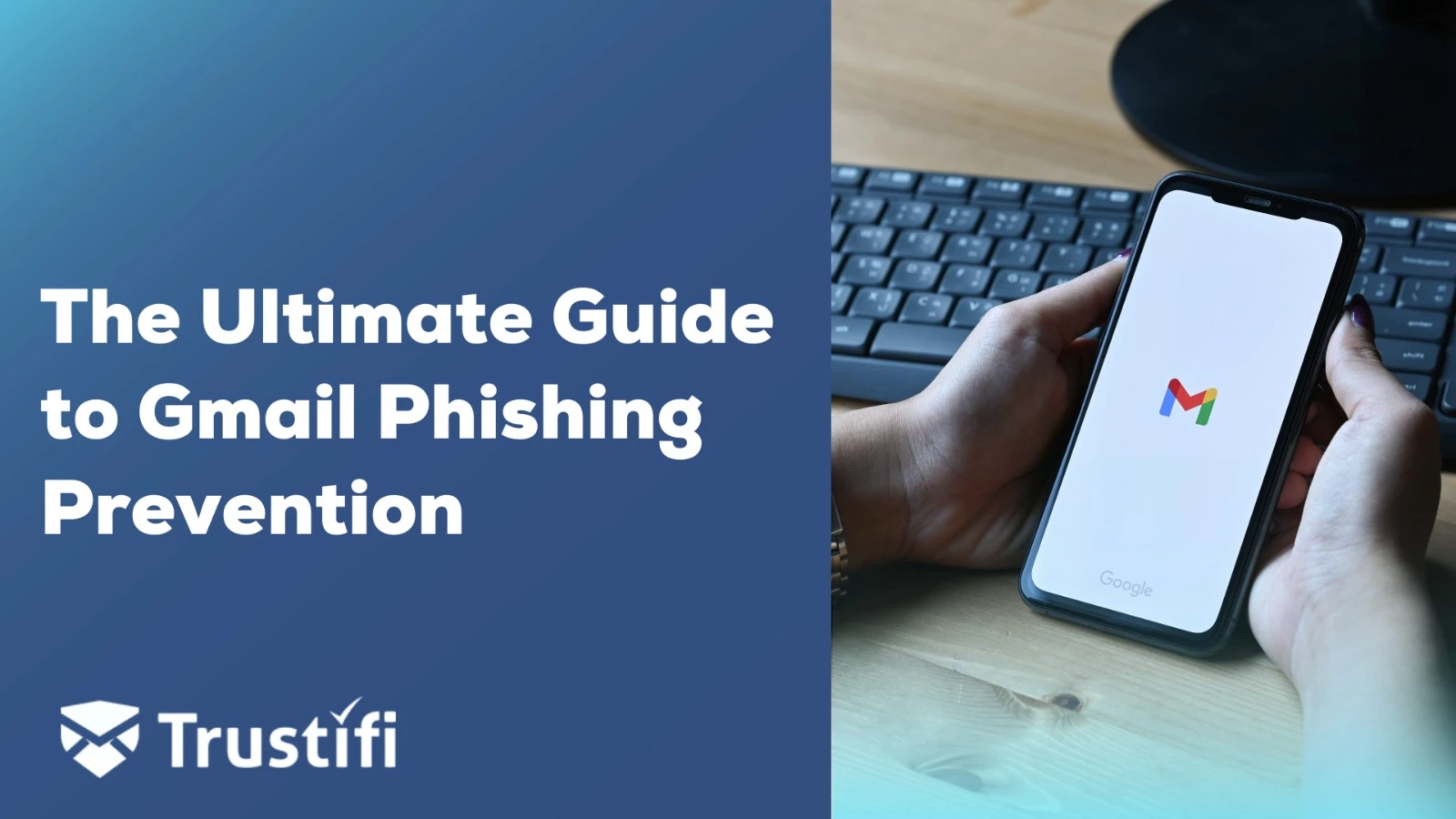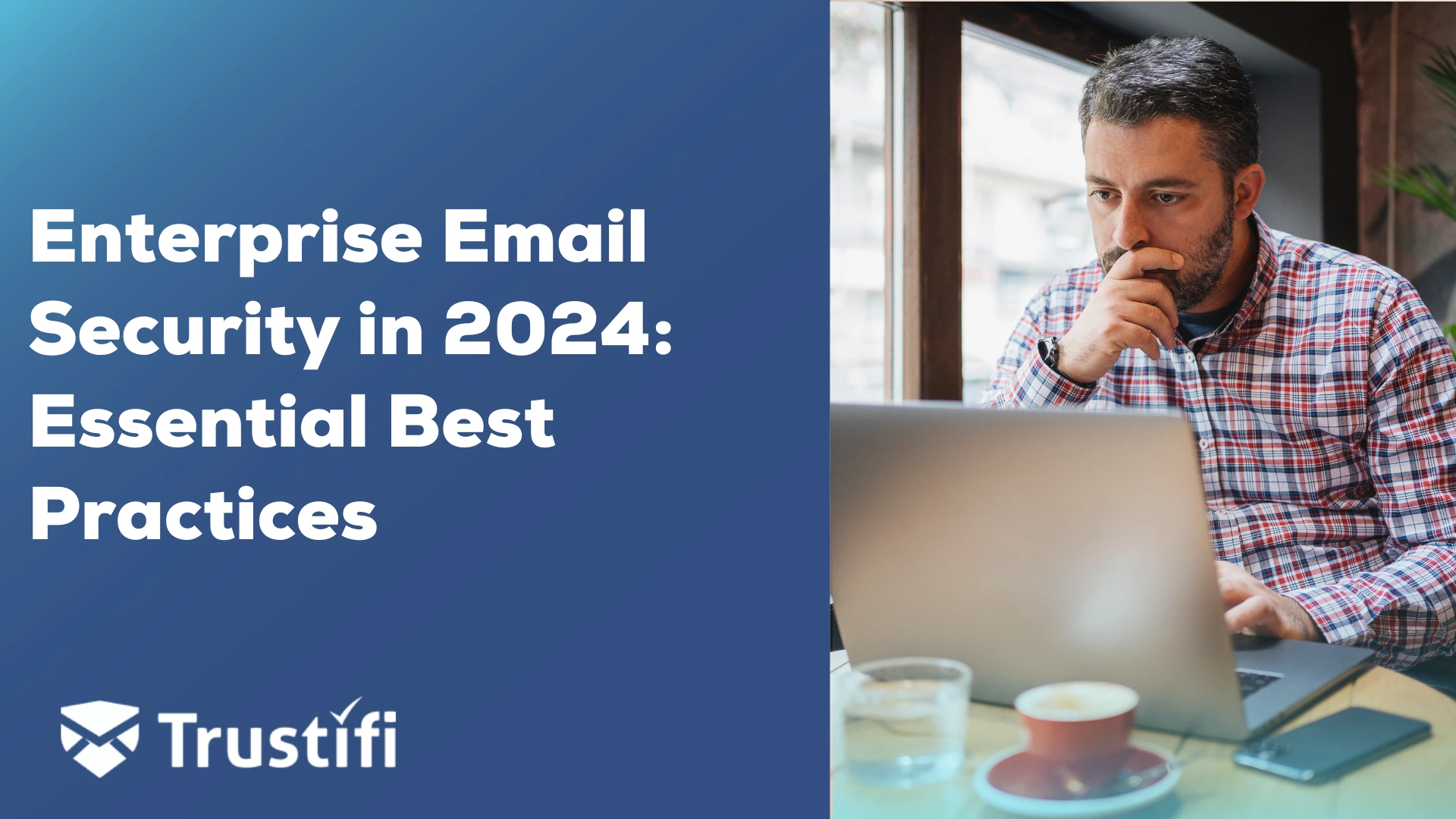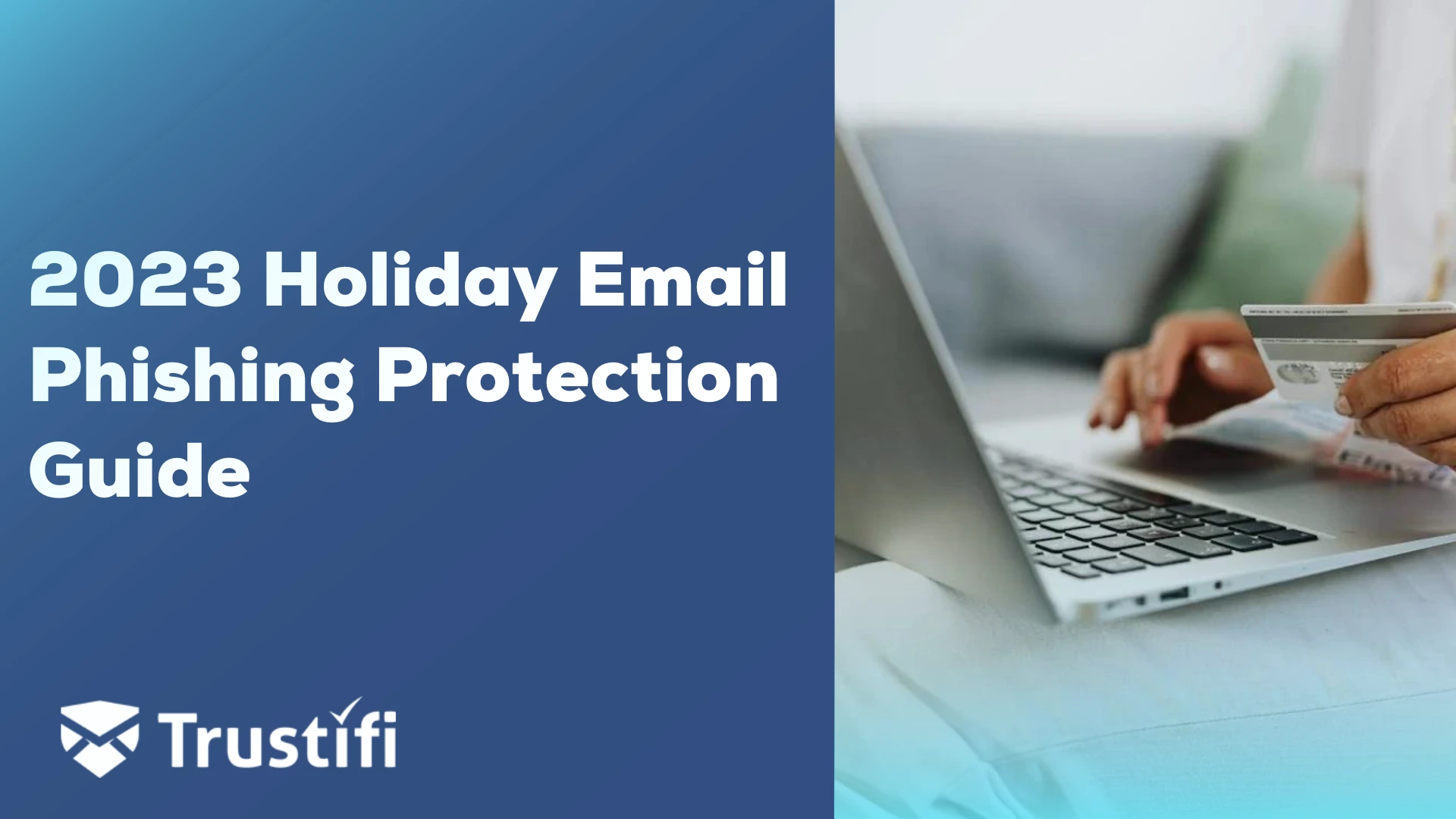Gmail’s global email solution is one of the most popular platforms for professional and personal users. While this email solution is easy to use and protected with basic security features, hackers exploit Gmail users through phishing attacks, identity theft, and ransomware-malware attacks.

Trustifi, a global leader in cloud-based email security, understands the importance of keeping Gmail safe from phishing and pharming attacks and other threats. Protecting email is a continued process requiring next-generation artificial intelligence(AI), and machine learning(ML) protection is critical for Gmail users.
What is Gmail Phishing, and how will it affect businesses in 2024?
Protecting email is a continued process requiring next-generation artificial intelligence(AI), and machine learning(ML) protection is critical for Gmail users.
Gmail phishing comes in several different attack vectors. Phishing attacks focus on exploiting human behavior by attempting illegal access to business intellectual property and people’s personal information. Phishing attacks embed malicious links and images within their attack emails.
Social engineering often accompanies Gmail phishing attacks. Hackers will research a specific victim or a group of people from social media sites like Facebook, LinkedIn, and Twitter to discover where their future victims work, where they went to school, or who is on their friends list. This data becomes embedded within the email phishing message.
Gmail phishing attacks and phishing scams are common problems for businesses, causing financial and brand reputation damage. These attacks frequently lead to business email compromise (BEC). BECs begin with a hacker or scammer posing as a supply partner, vendor, or customer requesting approval from the CFO for a refund or a vendor requesting payment of a past-due invoice.
In 2023, according to IBM Cost of a Data Breach report, BEC accounted for 6% of email phishing attacks, while 27% resulted in extortion. In the FBI’s 2023 Public Service Announcement (PSA), BEC scam losses topped 50 billion dollars.
In 2024, BEC losses will continue to climb as more hackers and scammers leverage artificial intelligence(AI) and machine learning (ML) tools—these tools generate well-written phishing emails designed to fool most email security filtering solutions.
Common Tactics of Phishing Emails.
Hackers use many techniques, including domain impersonation, fraudulent email addresses, and well-crafted emails originating from AI-based tools called WormGPT and FraudGPT tools
There are several tactics hackers will use when launching Gmail phishing campaigns, including:
- General Phishing Attack
- Spear Phishing Attack
- Whaling Attack
- Clone Phishing
- Blagging Attacks
General phishing starts with spam emails sent to millions of users worldwide, attempting to exploit people to send money or gain access to their login credentials. An excellent example of a general Gmail phishing attack would include:
- A spam message telling you have won the lottery in a foreign country.
- A message from someone you have been waiting to hear from for many years requesting money to help them during the holidays.
- An offer letter for a new job requesting your bank account information to set up a direct deposit.
Spear phishing Gmail attacks are like general phishing, except they send the message to a specific individual or department.
Whaling attacks focus on CEOs and other executive leaders.
Clone phishing continues to become one of the greatest threats to Gmail users. Hackers use stolen content from a previous email or attachment and will insert parts of a prior message into a new phishing email. The hackers will refer to an earlier message with actual content for their recent attack. Even with Gmail’s advanced security measures, this deception is complex because the message context references a previous conversation with a real corporate or known identity.
Blagging attacks use social engineering to establish a warm connection with a victim before sending the email phishing message.
How to Identify a Phishing Email?
Before the adoption of rogue AI and ML tools used by hackers, most email phishing messages were easy to detect and block. Historically, Gmail phishing messages contained misspelled words, poor grammar, and faulty dictation. With AI-enabled hacking tools, the next-generation Gmail phishing messages have become near-perfect, making them even more challenging to detect and prevent.
Even with the hackers using AI-based tools, preventing successful phishing attacks within Gmail inbox is possible. Most suspicious messages will contain an impersonated email address and a domain. Mismatched domains and URLs are also quick indicators of a phishing email. Hackers will copy a legitimate Gmail address and domain with a lookalike address.
An example of a lookalike email address:
Sales@firstrun.org (Legitimate) – Salesfirstfun@gmail.com.
Hint: Business emails commonly originate from their registered domain, not Gmail. However, personal users leveraging the Gmail.com email domain become more susceptible to impersonation.
Another area where users can identify a phishing email is reading the subject lines. Hackers and scammers will use clever subjects, including:
“You have won a million dollars; click here to learn more.”
“Congratulations, Microsoft is extending you an offer. Click on the link to review your offer.”
When users see similar subject line headers like these, reading the entire message before you click is essential to blocking an email phishing attack.
Best Practices for Protecting Yourself from Gmail Phishing
Users can access several email phishing prevention capabilities to help stop the effects of a Gmail phishing attack. Enabling these protection layers will add critical and essential protection. These protection tools include:
- Antivirus software
- Email Encryption
- Two-factor Authentication
- Al-based Email Filtering
Enabling gmail phishing protection combined with access security awareness training within the workplace or online videos on YouTube helps educate the users on the latest security threats and recommendations to protect themselves.
How to Report a Phishing Email?
Reporting a phishing email is vital for users to help stop the propagation of attacks across their home network or enterprise workspace. Users can tag an email as a phishing or spam message within Gmail. Users can access the pull-down inside the message to bring up a pop-up menu with options. Users can scroll down the menu and select “report spam” or phishing.

User leveraging the Gmail plugin from Trustifi also has access to similar reporting capabilities. Choosing the Trustifi plugin within Gmails allows you to report email phishing and spam messages with a single click.
Users taking a moment to report suspicious email messages as phishing helps keep other users safe.

Essential Security Steps Every User Should Take Immediately
Before every user accesses their Gmail accounts, enabling the various security layers and familiarizing themselves with different how-to-report suspicious messages is essential before sending the message. Users can implement some immediate steps to reduce exploits against their Gmail accounts.
- Users must update their Google Chrome browser with the latest security patches and feature enhancements. Many Gmail phishing scams and malware exploits happen because of older browser versions.
- Users need to download the latest anti-virus, anti-malware, and anti-phishing updates.
- Changing your password for your Gmail account is another significant preventive step to reduce security breaches.
- Ensure you use separate passwords associated with your primary email address on every website you access. Using the same password on your travel, banking, or e-commerce sites is risky if your credentials become compromised. Using separate passwords reduces the exposure across all your various sites.
- Watch the latest YouTube video on how to stop phishing scams, block unsolicited emails, and become aware of social engineering tactics. These videos are helpful and fun to watch. They will help stay current on the latest email security threats and how to protect yourself.
Technology is only part of the solution to protect yourself from cybercriminals. Becoming more aware of phishing attacks is critical to reducing the threat against your Gmail account.
The Benefits of Using Trustifi to Further Protect Your Gmail Account.
Trustifi’s proven email security platform delivers exceptional protection for Gmail accounts by augmenting and complimenting embedded security features with the Google offering. Layering email security is a proven strategy to reduce the effects of email phishing scams. Google’s essential email tools protect against viruses, phishing, and malware attacks. Layering Trustifi’s AI and ML capabilities embedded within their inbound filtering engine and enabling data loss prevention with email encryption inside their outbound module is proven to prevent data exfiltration from within Gmail inboxes.
Hackers’ ability to adjust their attack chains in seconds has become a genuine threat to Gmail users. Suppose hackers launch an email phishing message that becomes blocked by the first layer of protection; scammers can adjust their message and velocity once they discover a vulnerability that becomes susceptible to exploitation. Organizations and individuals leveraging Trustifi for Gmail security gain an additional layer of protection based on AI and ML to reduce the risk of email phishing attacks.
AI and ML protection embedded within Trustifi’s cloud-based platform extended even more excellent protection by automating the detection and response processes. This advanced automation capability provides an exceptionally proactive approach to detecting email phishing attacks and preventing them from affecting the user’s Gmail inbox. By leveraging automation, the users will not need to respond to every suspicious email attack. Trustifi provides security prevention services and dramatically reduces the time and effort that security engineers and individuals must spend dealing with thousands of email attacks daily.
What the Future of Gmail Security Holds in 2024 and Beyond
Many phishing scams, spam messages masquerading as marketing emails, and fake emails with false job offers will continue to rise within the Gmail service in 2024. Hackers will continue to use AI and ML tools to exploit Gmail with new variations of email phishing and impersonation attacks. These phishing email campaign attacks in 2024 will extend beyond Gmail to include SMS text and voicemail attacks.
QR codes, better known as quishing attacks, will continue to become a more significant problem for organizations and individuals in 2024. Hackers continue to embed malicious links within the QR code to redirect unsuspecting users to hacker sites designed to trick users into downloading malware or stealing the user’s credentials. Email security providers like Trustifi leverage several protection layers, including OCR scanning, to help detect these malicious quishing images.
Preventing email phishing starts with users remaining aware when they receive unsolicited messages from someone posing as a legitimate sender. As more users implement additional security from Trustifi, including advanced AI and ML prevention solutions, email encryption, OCR code, and DLP, this decision will have a positive impact on reducing the overall exposure to next-generation AI-powered zero-day attacks.
Get Started With Gmail Phishing Protection Today!
Whether you are looking for an extra layer of protection in your existing Gmail environment or a full-suite solution, the expertise and simplicity Trustifi offers will exceed your expectations. Let’s discuss pricing and a customized email security plan for you.



